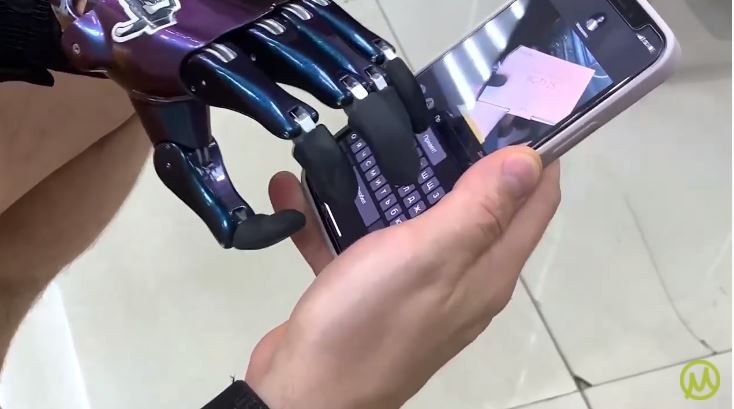New technological advancements with functional prosthetic hands raise graphene nanotubes' potential in allowing them to interact with electronic touchscreens.
Young scientists from Motorica, a biomed research, and development company focused on functional prosthetic parts, developed functional prosthetic hands that can interact with touch screens. It was made possible by integrating graphene nanotubes in the finger stalls fabricated with electrically conductive silicone material. Furthermore, the Motorica prostheses cost 10 to 15 times less than other comparable solutions priced up to $30,000.

ALSO READ: 2 Firms Are Moving Human Prosthetics into the Age of AI
Changing Functional Prosthetic Hands for the Better
Estimates place 1.5 million handless people around the world, and according to the World Health Organization (WHO), only 1 in every 10 people of these people have access to necessary prosthetics. In developing countries, the figure drops to only 5 percent of people in need.
"A prosthesis should not be an expensive medical product manufactured at a small scale, but should rather become an affordable wearable electronic gadget just like a smart watch or a smartphone. We do more than just restore the functionality of the hand: we expand it," says Vasiliy Khlebnikov, Co-Founder and Chief Development Officer at Motorica.
The Russian developer of these "cyber hands" has introduced a range of innovative products that include functional prosthetic hands capable of interacting with touch screens. This particular technology was made possible through the hands' finger stalls having electrically conductive silicone that has OCSiAl's TUBALL graphene nanotubes, which conducts electrical currents from the human body. Together with body-powered and bionic prostheses in the basic configuration, the prosthetic fingerstalls are generally effective with moden touchscreen displays.
"More sophisticated and expensive technologies developed for bionic prostheses are available on the market today, where electrical current is generated using internal electronic circuits and sent to a fingerstall," says Ilya Chekh, Motorica Co-Founder and General Director. The use of electrically conductive silicone solves the problem without the need for an additional current source. Depending on the requirement, they can manufacture a function prosthetic hand with all fingers having touchscreen functionalities, although the index or the little finger alone is benign enough for most applications.
Motorica also explains that the scope of application of graphene nanotubes does not end there. The flexible and ultra-strong material looks like a strand, only 50,000 times thinner than a human hair. In addition to silicone-based materials, graphene nanotubes are used in a range of applications with other polymers and electrochemical current sources.
About Motorica
Motorica LLC develops and manufactures functional prosthetic hands and arms for both adults and children. It also generates an ecosystem for users of different various rehabilitation devices. Since 2016, Motorica has already developed more than 2,600 prostheses for 1,500 people across 12 countries, and this includes unique for children previously turned down because of their complex injuries.
About OCSiAl Group
The largest manufacturer of graphene nanotubes, OCSiAl has a production capacity that covers up to 97 percent of the world's capacity for the material. The company currently maintains a workforce of about 420 people across 20 different countries, with more than 70 scientists focused on research and development.
RELATED ARTICLE: Egyptian Mummy's Wooden Toe Is One Of Oldest Prosthetics Found
Published on Tech Times










